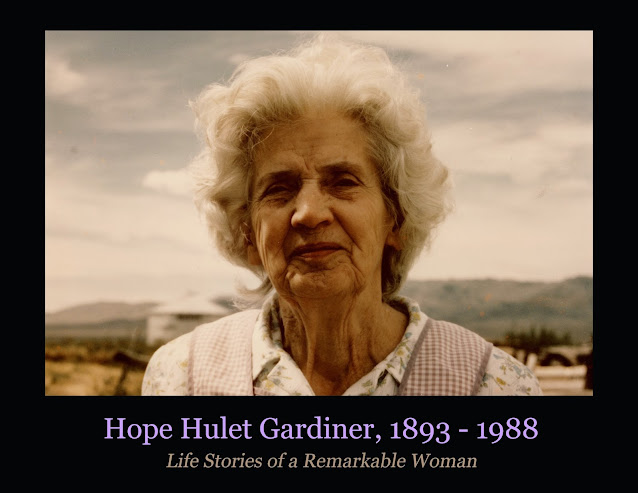What is the purpose of writing a family history picture book?
President James E. Faust said don't write a journal with mundane entries, write about the defining moments in your life or the defining moments in your ancestor's lives.
1. A Single Life Story of an Ancestor
Great-great-grandparents from statistical accounts of Scotland.
Great-grandparents from journal entries.
Parent from multiple journal entries and memories.
2. Multiple Stories of an Ancestor
Grandparent from journal entries.
Wife from journal entries.
3. Multiple Life Stories of Many Ancestors (one page per person)
 |
| 50 Ancestors from journal entries. |
Important considerations:
Advertise your book:
Video on choosing a company to publish your picture book.
https://www.youtube.com/watch?v=6f0iWtSVuyI&ab_channel=PhotoBookGuru
What to write?
1. A single Life Story of an Ancestor
I have a written a life story in picture book format on my great-grandparents entitled, Robert and Margaret Gardiner, Pioneers of 1868.
It is a narration of their lives from the time they left Scotland
until they died in Salt Lake City in the early 1900's. The text was
originally written by their son, Clarence Gardiner, in the 1950's, and I
later adapted it to fit a picture book format.
When I attended the 1980 World Conference on Records held in Salt
Lake City, a speaker said, "Using historical documents it is possible
to tell what someone ate, what their house looked like, what they wore,
how they traveled and where they worshiped." A few years ago, using the
internet, I researched and wrote on the lives of Robert and Elizabeth Stewart, Their Lives in 19th Century Scotland.
The book is a life story borrowing on customs and culture of the time
period in which they lived with photographs and information obtained
from the internet. I was able to document the type of clothing they
wore at the time, the food commonly eaten and type of transportation
used in the highlands of Scotland in the 1800's.
2. Multiple Stories of an Ancestor
My first wife, Suzanne Gardiner, passed away in 1994. She left behind her personal journals which became the basis for a book on her life entitled, Suzanne Marie Gardiner, Handmaiden of the Lord. I edited her writings and found content that touched on faith, family and personal reflections. This book is a treasure to her six surviving children and 12 grandchildren.
My aunt wrote a book on her mother and my grandmother, Hope Hulet. I asked if I could pick out inspirational moments from her document and turn it into a picture book. She said yes. Many people now know her inspired life because they have her stories in picture book form.
3. Multiple Life Stories of Many Ancestors (one page per person)
I wrote the Brown Heritage, Life Stories of Faith and Courage book
to include 50 ancestors related to one couple, Jim and Marjorie Brown.
Each ancestor has their own page with a picture (where available) and a
life story or reflection. The book includes their 5 generation
pedigrees and historical photographs.
Important Considerations when writing a picture book:
1. Choose page color, font color, and layout based on the formality of the book. A white background or black background will always make a more formal book.
2. You can create each page in outside programs like Photoshop for total control of how the photographs and text are arranged on the page prior to uploading to a publisher. You can also use templates from various publishers if you want less control but want to create the book faster.
3. Some companies use archival quality paper which will last longer and keep the photographs crisp and clear.
4. Proofreading is very important. When I did my last book, which was only 30 pages long, I had four people proofread the text and each person found errors even though the previous person thought they had found all errors. When you think your book is error free, publish a single copy because you will probably find more errors in the printed copy.
5. Labeling photographs with the place and date is very important for future generations. Do the best you can and if all else fails make an educated guess based on the age of the person in the photograph and where it was taken.
I have seen my books being used in family home evenings, and excerpts given in talks and lessons. They are read to our grandchildren. They have also been shared at family reunions and online content for my family history blog: GatheringGardiners.blogspot.com or GatheringGardiners.com. Publishing a book today is easy, cost effective, and will be a treasure for many generations to come.
Ending thoughts:
A family history book is a way to talk to future generations with information on the lives of their ancestors that preceded them. Would you like to share your knowledge of your ancestors with your grandchildren or great-grandchildren? In a picture book, your family history is an excellent way to do just that.
There is a benefit to reading the printed page for adults and children alike. In a recent 2011 study by Pew Research Center comparing reading printed books to digital books, it concluded an overwhelming preference to printed books when sharing books with others and reading to children.
“When you read a book, a proper kid’s book, it engages all the senses. It’s teaching them to turn the page properly. You get the smell of paper, the touch.” Kathryn Zickuhr, Pew Research Center
There are a number of online publishers like Apple's ibooks, Pinhole Press, Kindred Prints, Blurb, Lulu, Shutterfly, Artkive, Snapfish, Impressed, Artifact Uprising, and Mixbook, and more. Check their prices and when they have specials. A relative of mine published a 100 page FH book for under $20 dollars each using coupons and special offers.











